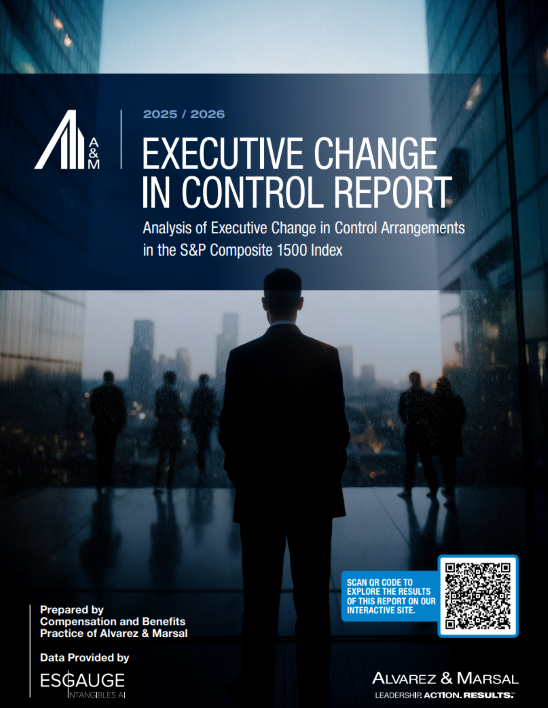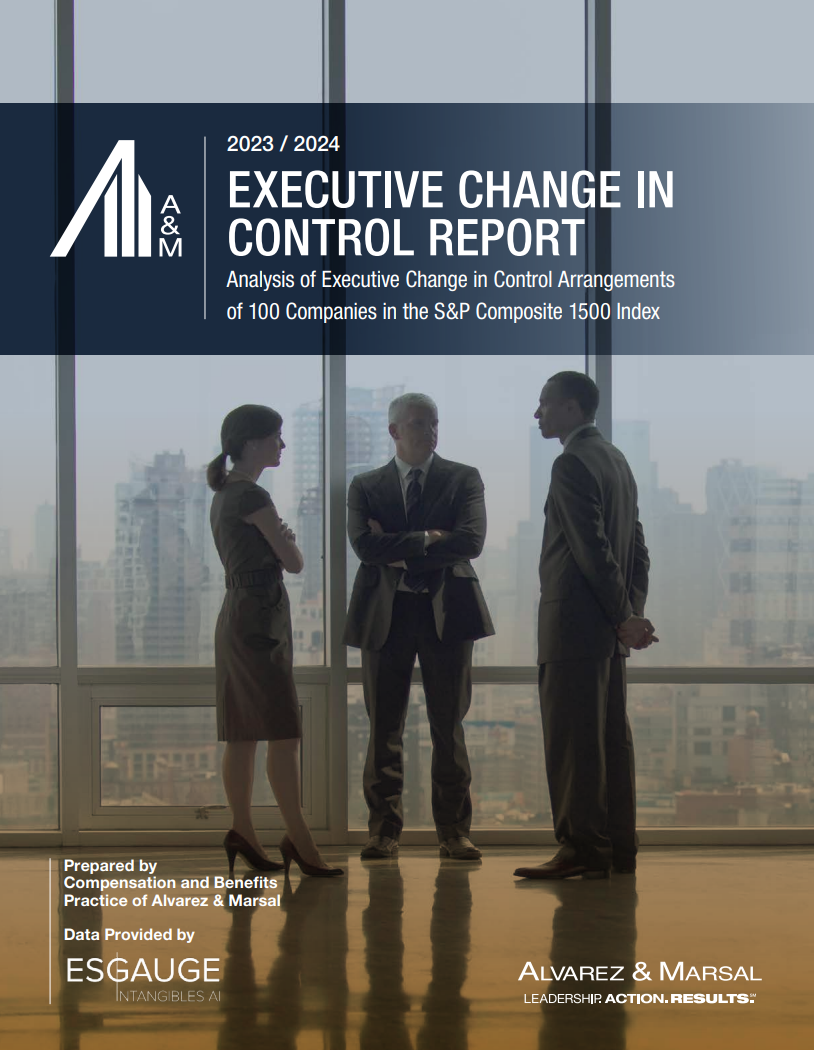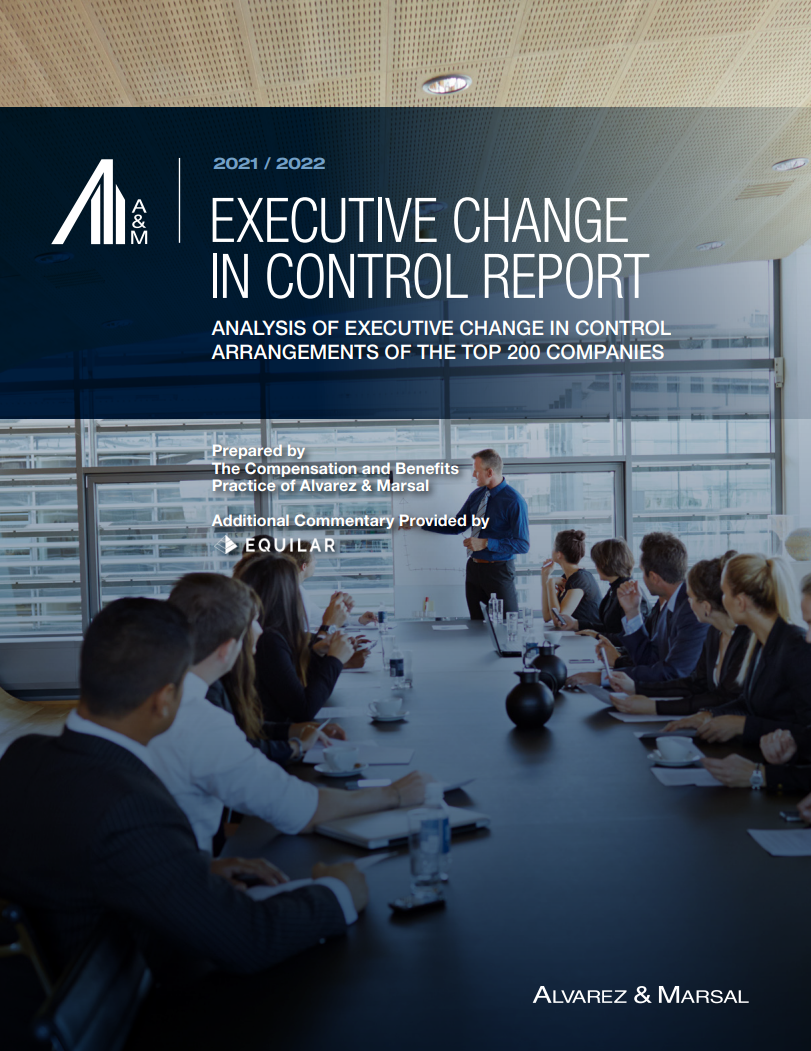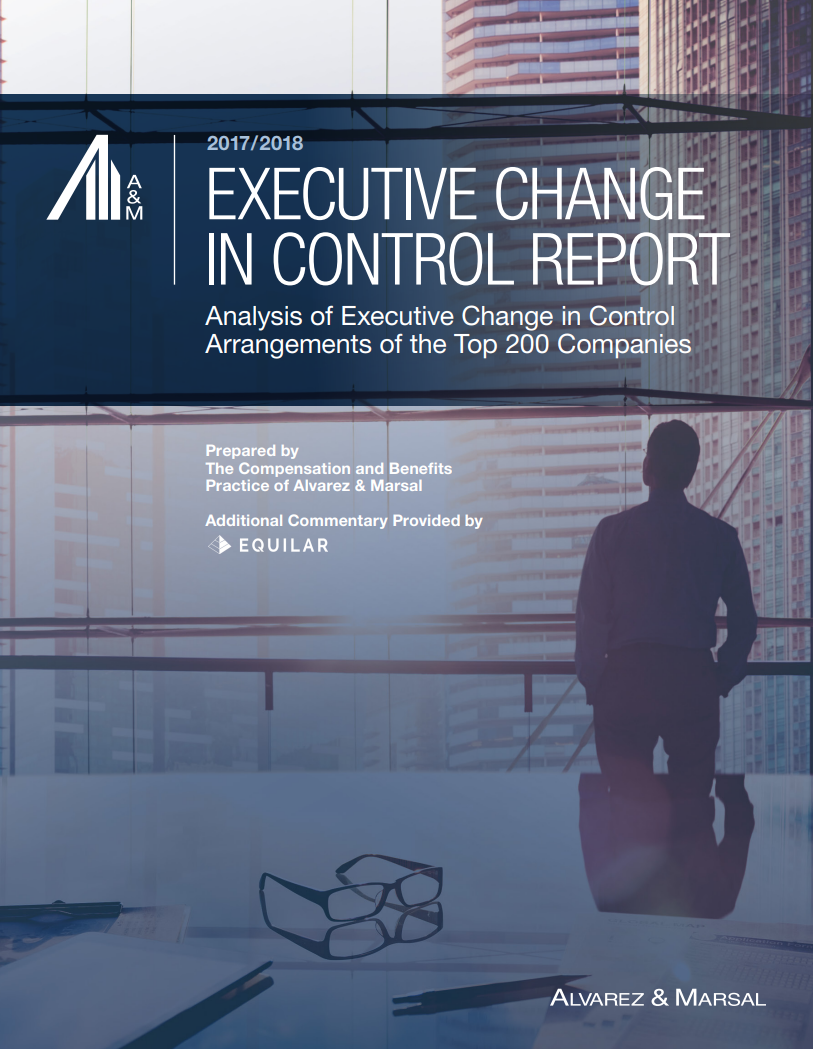November 18, 2025
2025 / 2026 Executive Change In Control Report
Alvarez & Marsal's (A&M’s) Compensation and Benefits Practice is pleased to share the results of its 2025 / 2026 Executive Change in Control Report. This report analyzes the change in control agreements of 100 companies in the S&P Composite 1500 Index across various market capitalization sizes (Small-Cap, Mid-Cap, Large-Cap, and Mega-Cap). We have partnered with ESGAUGE, who provided data and insights into compensation trends and practices. Please click below to explore the findings of the 2025 / 2026 Executive Change in Control Report on our interactive page and download the full report: | 
|
Our Findings
86%
of CEOs and 82% of CFOs are entitled to cash severance payments upon termination in connection with a CIC.
88%
of companies apply double-trigger vesting (CIC and termination of employment) to long-term incentives for CEOs.
37%
of CEOs are entitled to a severance multiple of 3.0x their compensation, reflecting the prevalence of higher severance multiples across industries.
3%
of CEOs and 1% of CFOs are entitled to excise tax gross-ups in 2025, indicating a continued decline in this benefit.
Key Highlights
Average Change in Control Benefit Values
- The average CIC benefit provided to CEOs in 2025 is $26,839,545, with Mega-Cap CEOs receiving the highest average of $39,430,483.80.
- Long-term incentives represent the largest component of CIC packages for CEOs, accounting for 62.7% of total benefits across all market cap sizes.
- CFOs receive an average CIC benefit of $8,452,085, with Mega-Cap CFOs receiving the highest average of $14,524,377.20.
- Similar to CEOs, long-term incentives are the largest component of CIC packages for CFOs, accounting for 58% of total benefits across all market cap sizes
Cash Severance Payments
- 86% of CEOs and 82% of CFOs are entitled to cash severance payments upon termination in connection with a CIC.
- The most common severance multiple is between 2.0x and 2.99x compensation, with 37% of CEOs receiving a multiple of 3.0x.
Change in Control Triggers for Equity Awards
- 90% of companies apply double-trigger vesting (CIC and termination of employment) to equity awards for CEOs.
- Double-trigger vesting is most prevalent in industries such as Health Care, Consumer Discretionary/Consumer Staples, and Real Estate
Health and Welfare Benefits Continuation
- 71% of CEOs and CFOs receive health and welfare benefits continuation upon termination in connection with a CIC.
- Mega-Cap CEOs have the highest prevalence of this benefit, with 100% receiving it, compared to 70% of CFOs in the Health Care industry.
Excise Tax Protection
- Gross-ups continue to decline, with only 3% of CEOs and 1% of CFOs entitled to this benefit in 2025, reflecting a significant reduction in its prevalence.
- The best-net provision remains the most common excise tax protection method, applied by 49% of companies for CEOs and 45% for CFOs.
Golden Parachute Rules - Section 280G
- Payments exceeding the "safe harbor" limit (300% of average gross compensation over the past five years) trigger a 20% excise tax penalty for executives and loss of corporate tax deductions.
- Companies address this issue through methods such as gross-ups, cut-backs, or best-net provisions.
Previous Executive Change in Control Reports

| 
| 
| 
|
|
| |



